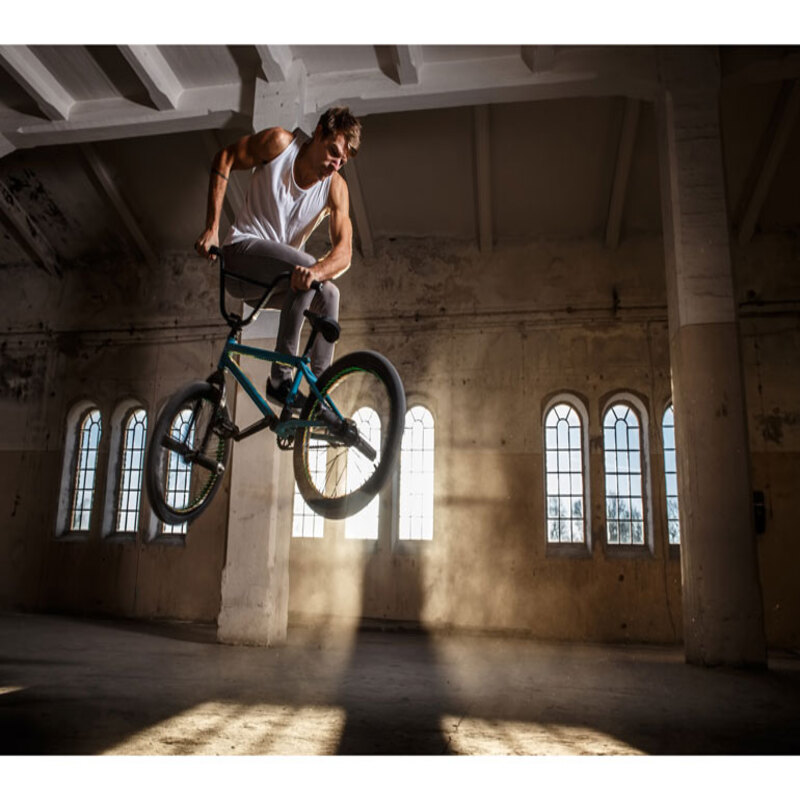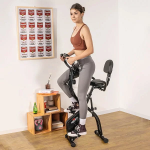Introduction to Bicycle Tricks
Bicycle tricks are not just about showing off. They enhance bike handling skills and offer a fun way to exercise. Whether you’re a beginner or an experienced cyclist, learning these tricks can add a new dimension to your riding experience.
The Basics of Bike Handling
Mastering bicycle tricks starts with understanding the fundamentals of bike handling. Effective bike control is crucial, as it ensures safety and confidence on the bike. Here are key aspects to focus on:
- Balance: Maintain your center of gravity to keep the bike stable.
- Steering: Use handlebars effectively to navigate turns and avoid obstacles.
- Braking: Know when and how to use the front and rear brakes to control speed.
- Pedaling: Develop a smooth pedaling technique to ensure efficient movement.
Practicing these basic skills is essential before attempting any bicycle tricks. Spend time riding in different conditions to build your confidence and control.
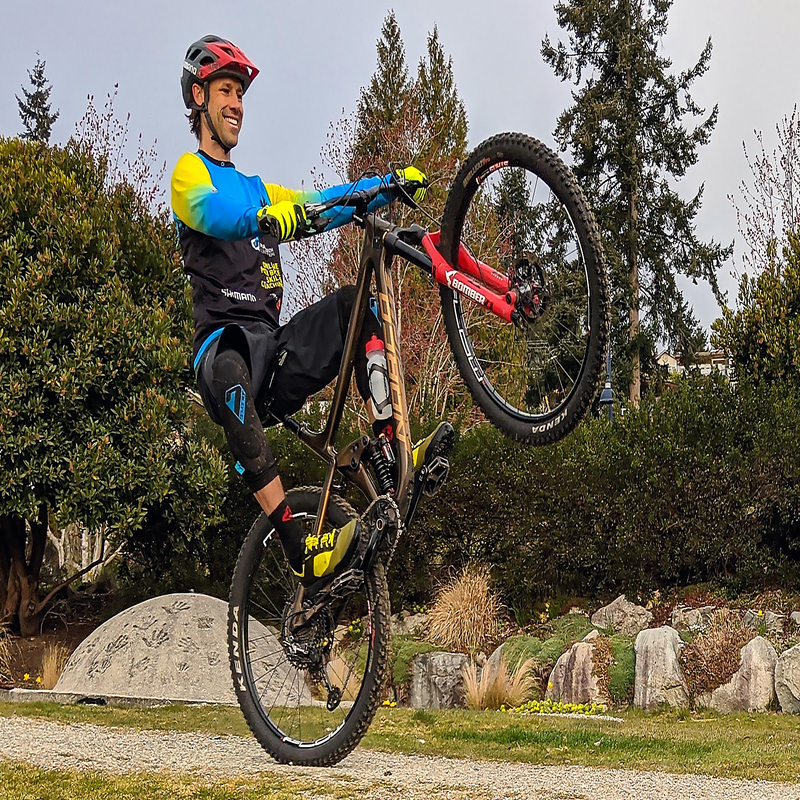
Essential Safety Gear for Trick Riding
When engaging in bicycle tricks, safety is paramount. From helmets to proper footwear, each item plays a critical role in ensuring protection and enhancing performance during trick riding.
Importance of Using a Helmet
Using a helmet is non-negotiable when performing bicycle tricks. It shields your head from potential impacts that can occur during falls or stunts. Here’s why prioritizing helmet use is essential:
- Protection Against Head Injuries: Helmets are designed to absorb impact energy and reduce the risk of head injuries.
- Legal Requirements: In many regions, wearing a helmet while riding is mandatory under local laws.
- Setting a Safety Example: Seasoned riders wearing helmets influence beginners to adopt safe riding practices.
- Comfort and Confidence: A good helmet not only offers safety but also comfort, making it easier to perform tricks with greater confidence.
Ensure your helmet fits correctly and meets the safety standards relevant to your area to maximize its protective capabilities. This basic step dramatically increases your safety while allowing you to focus on mastering new tricks.
Starting with Slides
Sliding on a bicycle is not only cool but also a practical skill. It can help you swiftly maneuver around tight corners or cope with sudden changes in terrain.
Fundamentals of the Slide Trick
To execute a slide, start by picking a safe location, like a park with soft ground. Ride at a steady, moderate pace. When you’re ready, sharply pull the back brake to make the rear tire skid. At the same time, twist the handlebars towards the direction of the slide. Maintain a low center of gravity to avoid falling. As you slide, be prepared to release the brake if you need to regain control.
Remember to practice sliding at low speed before trying it on faster rides. Also, always check your surroundings for safety. This trick should be learned gradually to build skill and confidence.
Tips for Safe Sliding on Different Surfaces
- On Loose Ground: Slides are easiest on gravel or dirt. Start here to get a feel for the motion.
- On Wet Surfaces: Wet conditions increase skid distance. Be extra cautious and slide with lower speed.
- On Asphalt: Beware, constant slides on hard surfaces can damage your bike tires. Use this surface for practice sparingly.
No matter the surface, always inspect the area for obstacles that could pose a danger. Use protective gear, especially gloves and knee pads, when attempting slides. And remember, before trying advanced bicycle tricks like slides, strong bike handling skills and safety equipment are crucial.
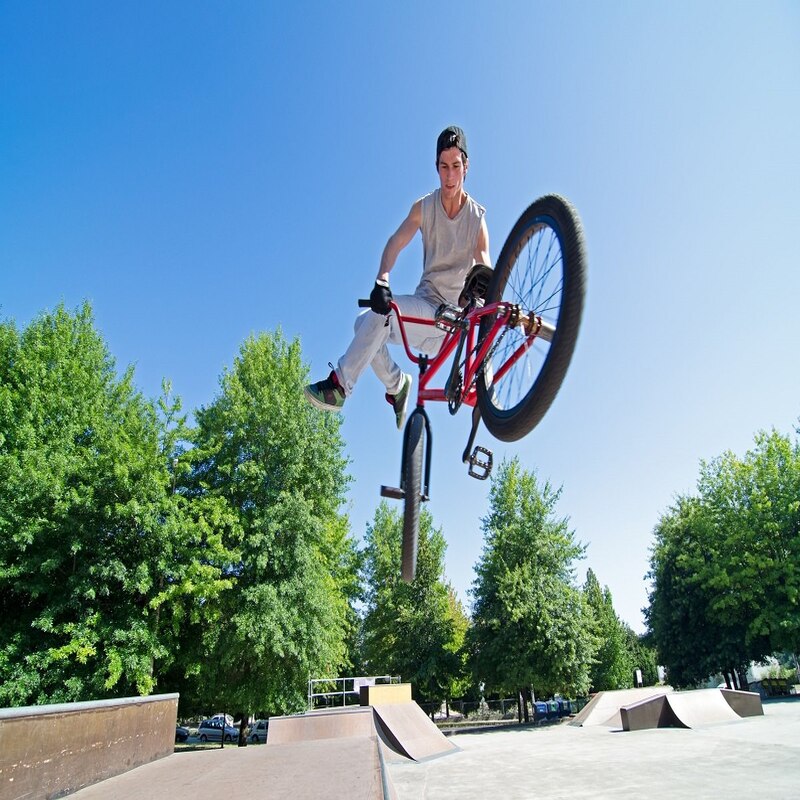
Mastering the Wheelie
Mastering the wheelie, one of the most iconic bicycle tricks, is both thrilling and technically demanding. This trick involves lifting the front wheel of the bicycle off the ground and balancing primarily on the rear wheel. It is not only a crowd-pleaser but also enhances your balancing skills and control over the bike.
Techniques for Lifting the Front Wheel
To successfully perform a wheelie, start by selecting a relatively flat and smooth surface to minimize the risk of slipping. Ensure your bike is in a lower gear for better control. Here are the steps:
- Start Slowly: Gain moderate speed; too fast can make control difficult.
- Seat Position: Sit or stand based on your comfort, but standing can often provide better control.
- Pedal and Pull: As you pedal, simultaneously pull the handlebars towards you gently but firmly.
- Lean Back: Shift your weight slightly backwards to help lift the front wheel.
Initially, you might find the front wheel only lifts slightly, but with practice, you can achieve greater height.
How to Maintain Balance and Control
Balancing during a wheelie is mainly about managing your body position and making minor adjustments:
- Continuous Pedaling: Keep pedaling at a steady rate to maintain the wheelie.
- Handlebar Adjustment: Use slight movements of your handlebars to keep your bike straight.
- Rear Brake Use: Tap the rear brake lightly if you feel like you’re tipping backward too much.
- Body Movements: Shift your body forward slightly if you need to bring the front wheel down.
Practicing these techniques in a safe, controlled environment is crucial. Always wear a helmet, and consider knee pads and elbow pads until you’re confident in your skills. Mastering the wheelie not only looks impressive but significantly improves your overall bike handling capabilities.
The Stoppie or Endo
The Stoppie, or Endo, is a dynamic bicycle trick involving the front brake to lift the back wheel off the ground while the bike comes to a stop. It combines skill, timing, and control, making it an exciting challenge for many cyclists. Whether you’re a seasoned rider or a beginner, mastering the stoppie can significantly enhance your bike handling capabilities.
Executing a Safe and Controlled Stoppie
To safely perform a stoppie, start by selecting a flat, obstacle-free area. Begin at a low speed to get the feel of shifting your weight and using the front brake effectively. Here are step-by-step instructions to ensure safety and control:
- Start at Low Speed: Keep your initial speed moderate to maintain control easily.
- Apply the Front Brake: Gently start applying the front brake. Do not grab it suddenly.
- Shift Your Weight Forward: As you brake, lean forward slightly to shift your weight over the front wheel.
- Lift the Rear Wheel: Continue to lean forward and pull up on the handlebars to lift the rear wheel.
- Control and Release: If you feel you’re tipping too much, ease off the brake and lean back.
Remember, the key to mastering this trick is practice and patience. Start slowly, increase your speed as you gain confidence, and always wear protective gear.
Advanced Variations of the Endo
After you have mastered a basic stoppie, you can try these advanced variations:
- Rolling Stoppie: After lifting the back wheel, try to maintain the balance and roll forward on the front wheel.
- 180 Stoppie: Perform a standard stoppie but twist your body and the handlebars to spin the bike 180 degrees before setting down.
- Stoppie Turn: While performing the stoppie, add a turning motion to circle around.
These advanced techniques require precise control and balance. Make sure you are comfortable with the basic stoppie before attempting these variations. With practice, you’ll add impressive maneuvers to your bicycle tricks repertoire.
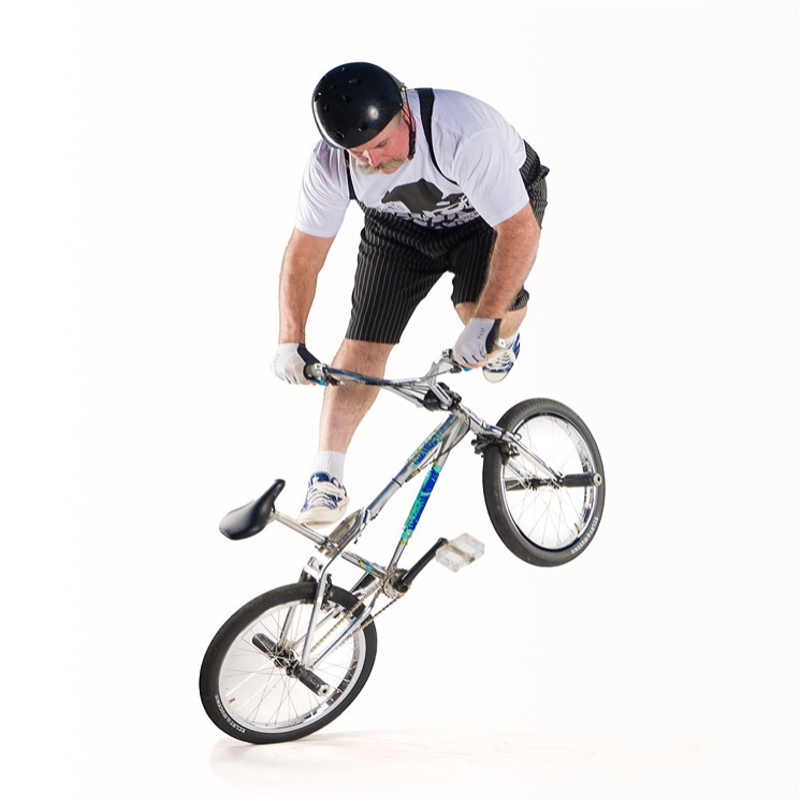
Perfecting the Bunnyhop
The Bunnyhop is a dynamic bicycle trick that enhances agility and control. It involves jumping both wheels off the ground simultaneously. This trick not only looks impressive but also increases your ability to navigate obstacles swiftly.
Step-by-Step Guide to Bunnyhopping
- Start with Speed: Approach the jump at a comfortable speed. Not too fast; just enough to give you momentum.
- Lift the Front Wheel: Similar to starting a wheelie, pull up on the handlebars to lift the front wheel.
- Jump the Rear Wheel: As the front wheel reaches its peak, use your legs to bring the rear wheel off the ground.
- Level the Bike: While in the air, push the handlebars forward to level the bike horizontally.
- Land Smoothly: Ensure both wheels touch down simultaneously. Bend your knees to absorb the shock.
Practicing on soft ground like grass can reduce the impact when learning.
Common Mistakes to Avoid
- Over-speeding: Too much speed can make it difficult to control the bike when airborne.
- Timing: Incorrect timing in lifting the wheels can lead to unbalanced jumps.
- Posture: Avoid leaning too far forward or backward; keep your weight centered over the bike.
By focusing on these steps and common pitfalls, you can master the Bunnyhop, improving both your style and ride efficiency.
Jumping Basics
Jumping on a bicycle can be as simple as it is exhilarating. It combines speed, technique, and timing. Ready for airborne action?
Preparing for Takeoff and Landing
Before jumping, you need to prepare. Choose a safe spot, like a grassy field or a park. Check your bike’s tires and make sure they are firm. Start with small jumps, like a speed bump or a low curb. Focus on your technique rather than height. Here’s how to jump safely:
- Approach with Control: Roll towards the jump point at a steady pace.
- Bend Your Knees: Just before the jump, bend your knees to prepare for the lift-off.
- Lift-off Technique: Push down on the pedals and pull up on the handlebars together.
- Smooth Landing: Aim for both wheels to touch down at the same time. Bend your knees to absorb the shock.
Using Speed and Body Position to Your Advantage
Speed and body position are key for skilled jumping. Not too fast, not too slow – find a balance. Keep your body loose and ready for action. Here’s what to keep in mind:
- Speed is Key: Too slow and you won’t lift off; too fast and you risk losing control.
- Center Your Weight: Stay centered over the bike to maintain stability in the air.
- Adjust Mid-Air: Use slight body shifts to correct your position before you land.
Remember, practice makes perfect. Start small, wear your helmet, and build up to bigger jumps!
Additional Tips and Tricks
Improving your bicycle tricks repertoire goes beyond the basics. To truly master bike agility, blending in additional skills is key.
Trackstands and Balance Skills
To boost your balance, practice trackstands. This move involves holding your bike steady, without putting a foot down. Here’s how to do it:
- Find a Slight Slope: It’s easier to balance with gravity’s slight pull.
- Use Your Brakes: Apply the back brake to control small rocking motions.
- Handlebar Position: Turn them slightly for balance; it helps in fine adjustments.
- Focus: Look ahead, not down, to maintain steadiness.
Perfecting trackstands sharpens your overall balance, making other bicycle tricks easier to handle.
Graceful and Practical Dismounting Techniques
Dismount with style and ease using these methods:
- Swing Leg Over: As you slow down, swing one leg over to the other side, standing on one pedal.
- Lean In: Lean slightly to maintain balance. This helps when dismounting at speed.
- Practice: Start slow, then try at higher speeds once comfortable.
Efficient dismounting saves energy and adds fluidity to your rides. With these additional skills, you’ll not only impress bystanders but also enhance your control and confidence on your bicycle.
